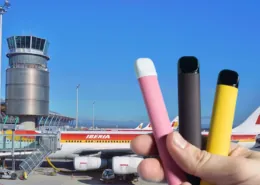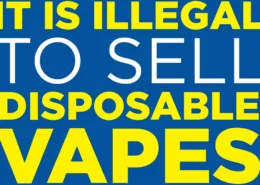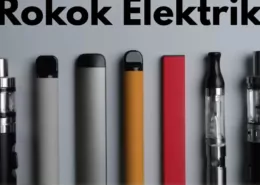Is Second Hand Vapor Safe?
Vaping has become a common practice in recent years, replacing traditional smoking for many. Yet, with this shift comes new concerns and questions, such as the safety of second-hand vapor. Considering the sobering statistics, with over 40,000 people succumbing to ailments caused by second-hand smoke annually, it’s no wonder that society is cautious. So, today, we’re here to shed light on the truth behind second-hand vapor, unmasking its mysteries, and addressing your concerns.
Decoding Second Hand Vapor
To start, let’s define what second-hand vapor is. Simply put, second-hand vapor is the residue that comes from vaping and is subsequently expelled into the environment. Quite like its infamous cousin, second-hand smoke, it has the ability to hover in the air long enough for anyone sharing the space to inhale a portion of it, particularly in enclosed spaces.
Now that we’ve clarified what second-hand vapor is, let’s move onto its production mechanism and understand how it differs from traditional smoke.
The Birth of Vapor
Unlike traditional cigarettes, which continuously emit smoke once lit, vapor production in vaping devices only occurs when the user inhales. This is due to the functionality of e-cigarettes and similar devices that house a small metal coil within an atomizer. This coil heats an e-liquid, a solution that often contains nicotine and flavorings, converting it into the visible vapor.
So, when a person vapes, the second-hand vapor is the excess that is expelled from the vaper’s lungs and mouth, nothing more. The device itself is not a constant source of vapor, making it substantially different from smoking a conventional cigarette.
What does this mean in terms of exposure for those around the vaper? Let’s explore this further in the next section.
Contents of Second Hand Vapor
A common misconception is that second-hand vapor, much like second-hand smoke, contains carbon monoxide and tar. This is not the case. Because e-cigarettes and vape pens do not contain or burn tobacco, they do not produce these harmful byproducts.
Yes, there can be trace amounts of potentially harmful chemicals and metals present in the vapor. However, when we compare these levels to those found in second-hand smoke, they are significantly lower, indicating that second-hand vaping may be less hazardous.
Breaking Down the Exhaled Vapor
The majority of the vapor content exhaled into the air by vapers is composed of propylene glycol (PG) and vegetable glycerin (VG), the primary constituents of most e-liquids. PG and VG are generally recognized as safe by the FDA, but what does this mean for those exposed to second-hand vapor?
According to Igor Burstyn, a toxicology specialist at Drexel University, while the contents of e-cig vapor warrant further study and observation, the levels of contaminants in exhaled vapor are so minuscule that their health impacts are likely to be insignificant.
However, what happens to the vapor that isn’t inhaled directly, and instead settles on surfaces?
What Happens to Uninhaled Vapor?
The vapor that isn’t inhaled doesn’t vanish into thin air; instead, it settles on surfaces around the vaper. This has raised some concerns about residual nicotine on floors, furniture, and other surfaces. However, research from the University of California in 2016 provides some reassurance, indicating that 93.8% of the nicotine is retained by the vaper, leaving a minimal amount in the exhaled vapor.
Is Second Hand Vapor Safe?
Based on current research, no definitive health risks have been associated with second-hand vaping for bystanders. Burstyn’s conclusion suggests that the exposure to potentially toxic chemicals from second-hand vapor is so minimal that it is unlikely to present a significant risk. Whatever potential harm the vapor may cause to the vaper, the risk to bystanders is magnitudes lower – by a factor of 10, 100, or even 1000 times.
But here’s the catch. Just because second-hand vaping hasn’t been conclusively proven to be dangerous, doesn’t mean it’s accepted by everyone. People around you may still have concerns or find the vapor irritating or unpleasant.
Respect and Courtesy in Vaping
Even if the health risk from second-hand vapor is low, it’s vital to respect the feelings and preferences of those around you. If someone objects to your vaping, be polite, respect their wishes, and find an alternative place to vape. This is especially crucial if someone around you suffers from respiratory issues, like asthma, as PG and certain flavorings in vape juice can cause airway irritation.
Should you wish to vape indoors without causing discomfort to others, consider stealth vaping – a practice that minimizes vapor production. This can be achieved by using an e-liquid with a higher PG content or a vape kit designed for stealth vaping.
Final Thoughts
At present, research shows that second-hand vaping is unlikely to pose significant harm to bystanders. However, it’s always important to be mindful and considerate of the people around you. Not everyone may appreciate the vapor clouds, no matter how safe they are. And when it comes to children, it’s better to err on the side of caution. While there isn’t definitive evidence suggesting danger, we recommend refraining from vaping around them until more research is done.
With responsible practices and respect for others, vaping can continue to serve as a safer alternative to smoking. So, here’s to happier and healthier vaping experiences!
FAQs
What is second-hand vapor?
Second-hand vapor is the residual output that a vaper exhales into the environment after inhaling from an e-cigarette or similar device.
Does second-hand vapor contain harmful substances?
Second-hand vapor can contain trace amounts of potentially harmful chemicals and metals, but these quantities are significantly less than those found in second-hand smoke.
Does second-hand vapor pose a risk to bystanders?
Current research indicates that the health risk to bystanders from second-hand vapor is very low. However, further research is ongoing.
Is it okay to vape around children and pets?
Until more definitive research is available, it’s recommended to avoid vaping around children and pets.
Is it okay to vape indoors?
Vaping indoors is generally acceptable, but it’s important to consider the comfort and preferences of others in the vicinity. If others object, it’s courteous to vape elsewhere.
- Is Vaping While Driving Illegal in North Carolina? - June 29, 2025
- Vaping Laws in North Carolina –A Comprehensive Guide for 2025 - June 29, 2025
- Is Vaping While Driving Illegal in New Mexico? - June 28, 2025









